How to build an effective fleet driver safety program: Tips + templates

Key Insights
- Creating a best-in-class fleet safety program sets your fleet up for success by reducing your collision risk and improving driver safety.
Large truck collisions account for 9.6% of all fatal traffic incidents in the US. Fleet driver safety is an ongoing practice by organizations to maintain the safety of their fleet and mitigate collision risks, through comprehensive company-wide safety programs.
A best-in-class fleet safety management system starts with a core team of people who are committed to safety, combined with regular fleet safety training and a written policy that is consistently communicated and enforced. Benchmarking can also be used to improve performance.
What is a fleet safety program?
Fleet safety programs are comprehensive plans that companies implement to ensure the safety of their fleet operations and reduce collision risk. In 2021 alone, large trucks were involved in 379,000 property damage-only (PDO) collisions, highlighting the importance of effective safety measures.
The programs typically include policies, procedures and practices designed to minimize risks associated with vehicle use, improve fleet driver safety and reduce the likelihood of collisions.
Key components typically include driver training and education, regular vehicle maintenance and using technology to monitor and improve driver performance.
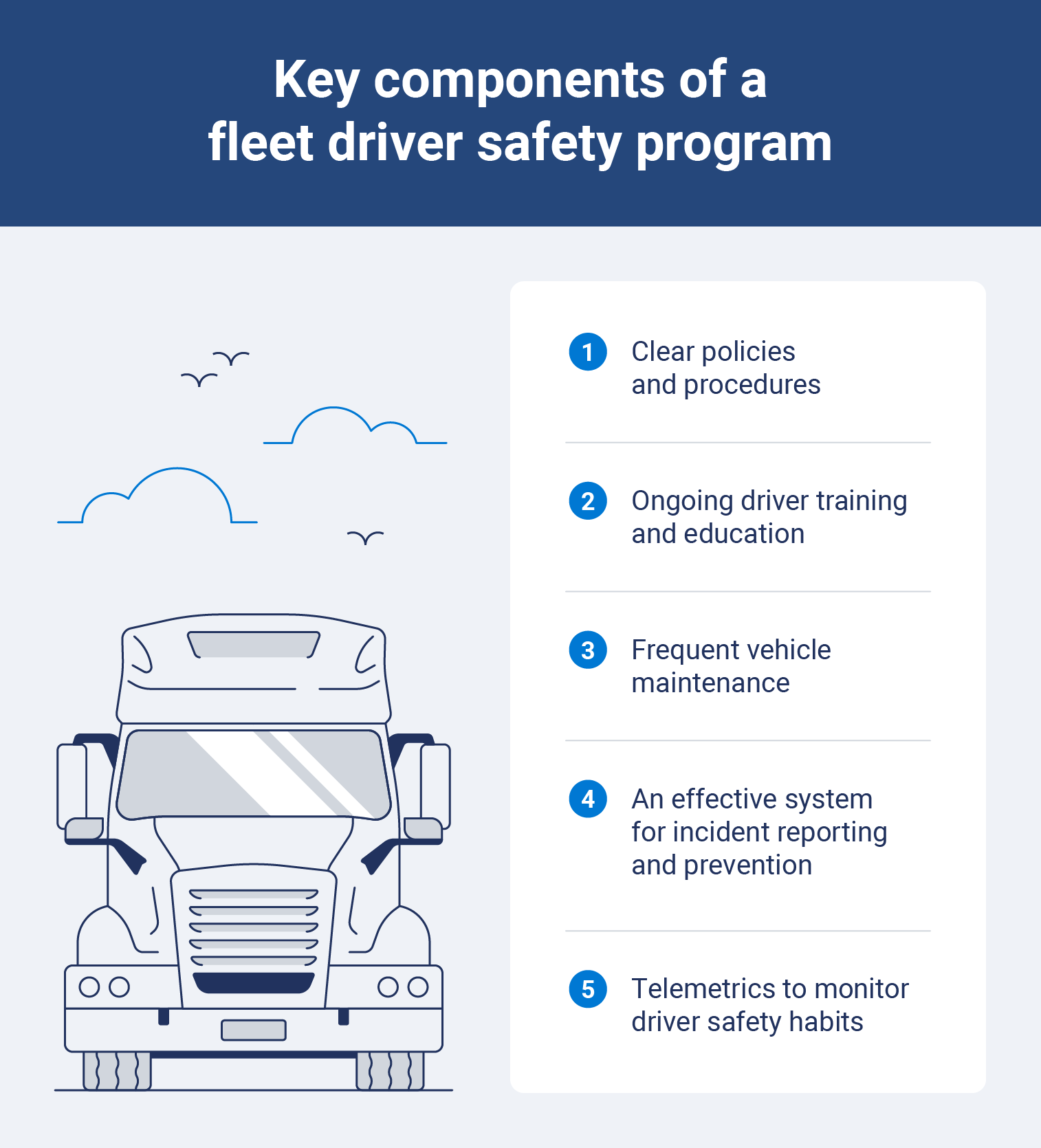
How to build an effective fleet safety program
Building an effective fleet safety program is an ongoing process that requires consistency and adaptability. It begins with the hiring process and involves effort from everyone in your organization. Follow these steps to create a comprehensive safety program.
1. Establish clear driver rules and regulations
The foundation of effective fleet safety programs is built on clear and concise rules and regulations for fleet drivers. These can include rules on:
- Driver behavior
- Vehicle maintenance
- Driver hours
- Hazardous materials handling
2. Set up a fleet safety council
Creating a fleet safety council or dedicated team is a best practice for any business or organization. The safety council can meet on a regular basis, at least monthly, to analyze all collisions — both preventable and unpreventable — as well as all exceptions outlined in the fleet safety policy.
Team members could include
- The fleet manager
- Human resources representatives
- Driver's managers
- Legal representatives
The main goal of a safety council is to track all infractions and to consider any appeals filed by drivers who believe they have been unfairly penalized. This group also ensures policy is communicated properly, frequently and fairly at all levels of the business.
A driver feedback program enhances fleet safety management by encouraging open communication and allowing drivers to share their insights and concerns.
Proactive communication encourages a culture of safety and inclusion so drivers feel valued and heard. Regular feedback sessions, combined with real-time data analytics, enable fleet managers to fine-tune their strategies and address specific areas that need attention.
Inconsistent and unenforced safety policies increase incident risks, legal liability and financial consequences.
3. Identify and screen all drivers
Drivers play a key role in an effective fleet safety program. It is important to keep safety in mind when hiring new drivers by screening them for:
- Driving history
- Driving experience level
- Relevant safety certifications
- Drug and alcohol use
- General background checks
It is also important to know your current drivers and their driving habits. An unsafe driver can cost your organization money and impact your reputation.
4. Train drivers on best safety practices
Make sure all drivers have access to current safety policies and procedures. Equipping them with the best tools improves their response to incidents.
Access to safety policies is only the first step; ongoing training for current drivers is a useful preventative strategy for reducing collisions. This could be defensive driving training, classes on vehicle maintenance and emergency response procedures.
Gamifying your fleet safety program is a good way to make the learning process engaging and track progress among drivers.
5. Create fleet safety benchmarks
A good technique for analyzing and optimizing operations based on a fleet's driving habits is fleet benchmarking. This method allows you to assess your current fleet performance and track your progress toward your objectives by comparing your data to that of other fleets.
Through the use of telematics, fleet managers can collect a significant amount of data from a number of sources, create unique fleet goals and make appropriate adjustments to their fleet operations based on industry standards.
Using fleet safety data helps you understand and compare your performance to others in your field. You can see where you're falling short and discover ideas for improvement.
6. Set incident response procedures
People don’t always make rational decisions when a collision occurs and panic sets in. Incident response procedures, scenario-based training and having physical copies in each vehicle all support effective driver responses during an emergency.
7. Monitor policy compliance with fleet rules
A good process is to manage by exception. This means fleet managers should focus their time on issues that have the greatest impact on the company’s bottom line — like dangerous driving habits. Improving your company’s CSA score signals a decrease in incident risk, reflecting a commitment to safer operations.
A pre-built driver safety scorecard, like the one available on the Geotab Marketplace, helps set up measurement rules for each part of your safety policy, automatically generating reports for managers to easily track and improve driver safety.
Dash cams are an invaluable tool for modern fleet safety programs. By recording real-time footage, these devices provide irrefutable evidence in the event of an incident, which helps streamline the resolution process.
More importantly, dash cams serve as a deterrent against unsafe driving practices and encourage drivers to adhere to safety protocols. The visual data collected can also be used for coaching and training purposes, offering drivers tangible insights into their driving habits and areas for improvement.
8. Hold your team accountable
Clearly defining responsibilities, accountability and timelines for reporting action items improves driving behavior and safeguards your company.
Choose an accountability solution that aligns with your company’s culture and safety priorities.. All organizations should have an internal or external solution in place that documents all actions and events related to safety policy management, as well as someone who assigns and tracks driver training for exception behavior.
Requiring an annual driver training refresher and policy reinforcement program is also a good way to maintain informed employees and a best-in-class fleet.
9. Stay up-to-date on fleet maintenance
In addition to promoting a culture of accountability, regular fleet maintenance is essential for ensuring the safety and reliability of any fleet.
A stringent maintenance schedule helps prevent mechanical failures that could lead to incidents. This involves routine checks and timely repairs of key components such as:
- Brakes
- Tires
- Lights
Effective fleet maintenance promotes safety and optimizes vehicle performance, extending the lifespan of your fleet and supporting a sustainable operational model.
Why is a fleet safety program important?
A thorough fleet safety program is important because it protects a company’s most valuable assets — its employees and vehicles.
Beyond keeping drivers safe, a well-executed fleet safety program breaks down fleet safety obstacles and can greatly reduce costs associated with collisions, such as repairs, legal fees and insurance premiums.
Promoting a culture of safety increases overall productivity by minimizing vehicle downtime and fostering responsible driving behaviors, which also improves public safety.
Fleet driver safety tips
Drivers face constantly shifting road conditions where they need to be prepared for unexpected changes. Here are some additional fleet safety tips to keep in mind:
- Make sure you are well-rested
- Be mindful of weather and road conditions
- Follow speed limits
- Familiarize yourself with and follow local traffic rules
- Manage your fuel consumption
- Keep emergency equipment in your vehicle (first aid kit, spare tire, flares, jumper cables)
- Carry a reliable device to contact managers
- Become fleet safety certified
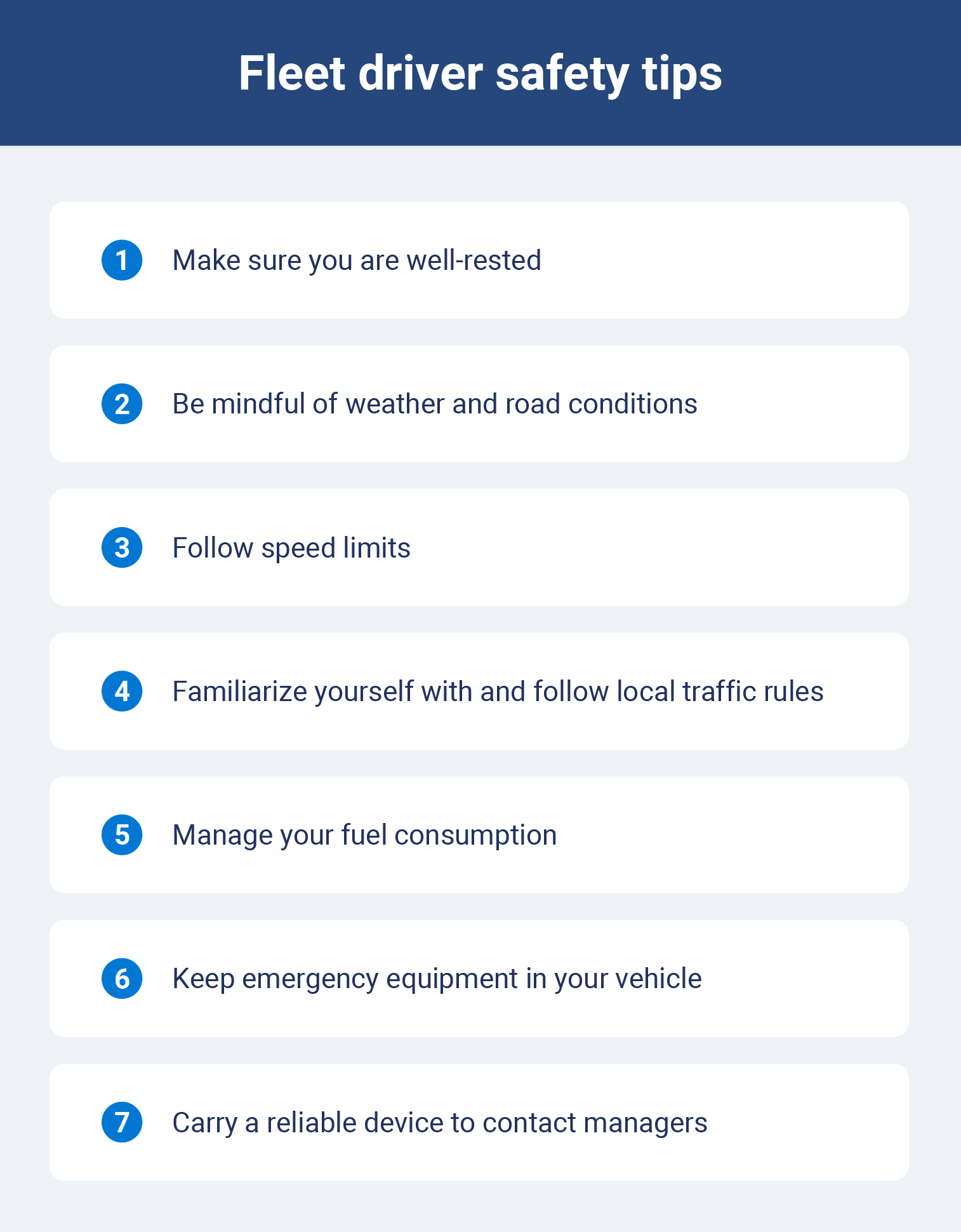
Fleet driver safety program templates
Fleet safety program templates are tools to ensure your policies are implemented effectively and followed by your organization. Use these templates to assist in all key stages of effective fleet safety programs.
Fleet safety program optimization checklist
Implementing an effective fleet safety program is essential to protect your organization. Use this checklist to cover all key elements of a fleet safety program, including:
- Setting up a fleet safety council
- Creating safety benchmarks
- Developing a training program for drivers
- Implementing safety policies and procedures


Driver safety scorecard report
The Driver Safety Scorecard Report is a proactive fleet management tool for monitoring risky driving behaviors across your fleet. It provides a global view of fleet drivers’ habits on the road. The report monitors three specific areas:
- Speeding
- Seat belt use
- Aggressive driving
The report’s default setting measures hard acceleration, harsh braking, harsh cornering, seat belt, speeding and excessive speeding.
You can customize the rule weights and the risk classification of the scorecard. For example, the default weight of seat belt use is 20%, but you can increase it to 30% if it is a higher priority for your fleet. You can shift your focus to another metric after making progress in one area, such as seat belt use.
Whether you want to enforce safety policy, help minimize risk or lower maintenance costs, this free report provides many benefits. Learn how driver scorecards work to understand key metrics and useful strategies for your fleet.

This Driver Safety Scorecard Report shows a fleet-level breakdown of safety scores, divided by category and vehicle.
HOS driver violations alert report
Drowsy driving is a serious problem. Drowsiness slows down a driver’s reaction time, impairs decision-making and can increase the likeliness of a collision. For fleets, ensuring drivers follow Hours of Service rules is one way to maintain proper periods of rest on the road and limit driver fatigue.
The HOS Driver Violations Alert Report monitors compliance with Hours of Service. Fleet managers can set up the report to send out an email alert when a driver violates their HOS limits. Violations can also be compiled into a global report that shows violations by drivers in order to detect trends or training needs.
Like the Driver Scorecard, this report is also available for free on the Geotab Marketplace.
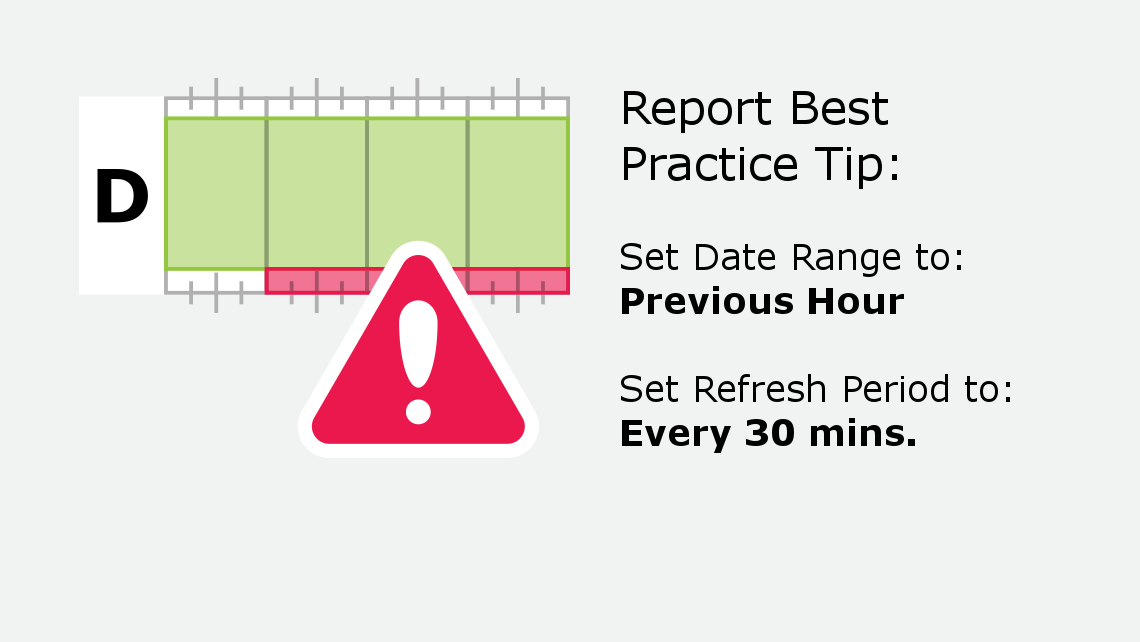
The HOS Driver Violations Alert Report identifies each HOS violation by driver and allows you to track when and how frequently violations occur.
Incident response card
An effective fleet safety program reduces the likelihood of collisions but won’t prevent them entirely. An incident response card is a useful tool for fleet drivers to reference how to respond appropriately after an incident . Drivers can keep this in their glovebox or somewhere else they won’t lose it.
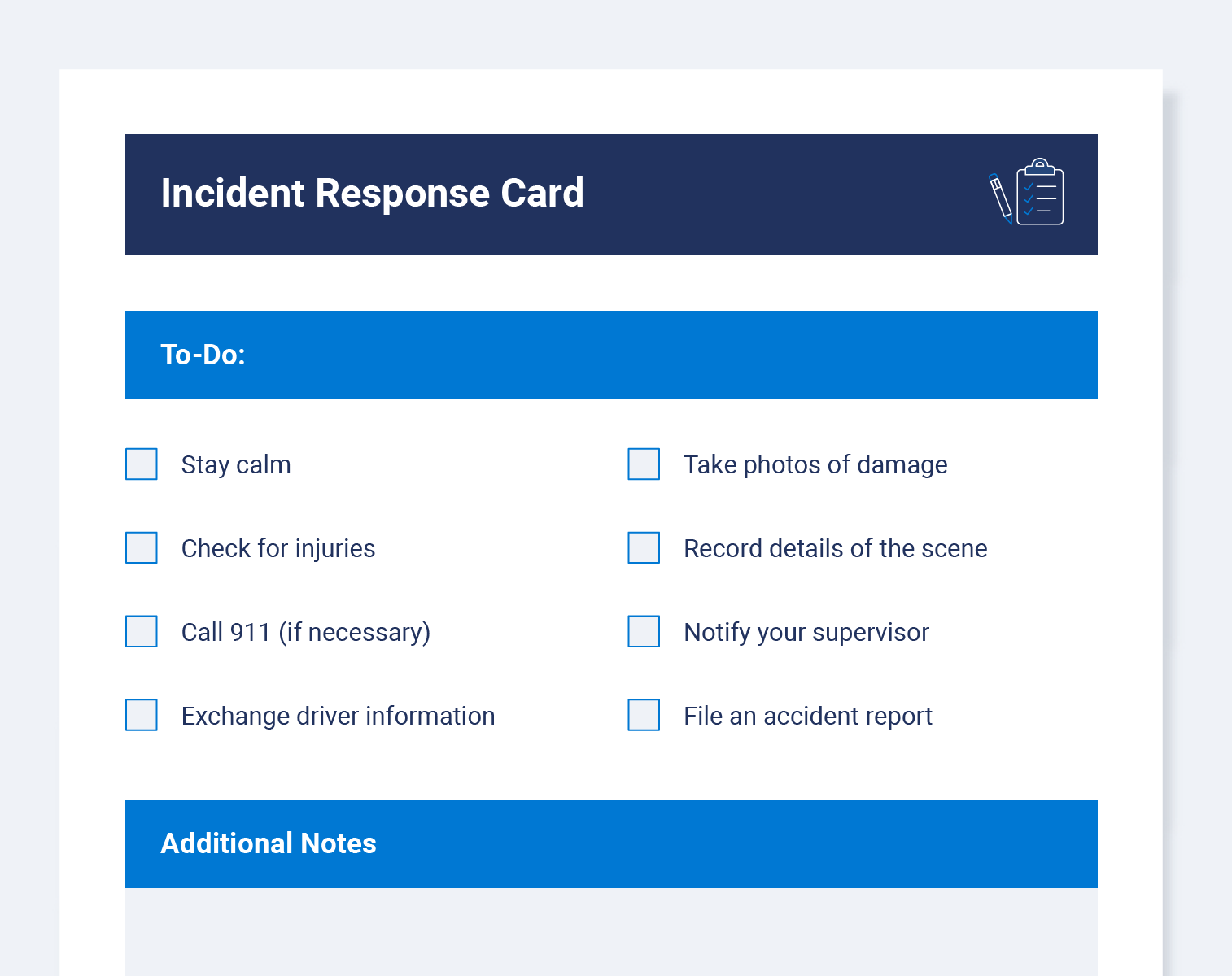

Driver vehicle inspection report
Drivers should inspect their vehicles before and after operating them. A driver vehicle inspection report (DVIR) is a checklist of what you need to inspect in your vehicle, broken down by category. It will usually include sections such as:
- Vehicle information
- Exterior inspection
- Interior inspection
- Engine and under-hood inspection
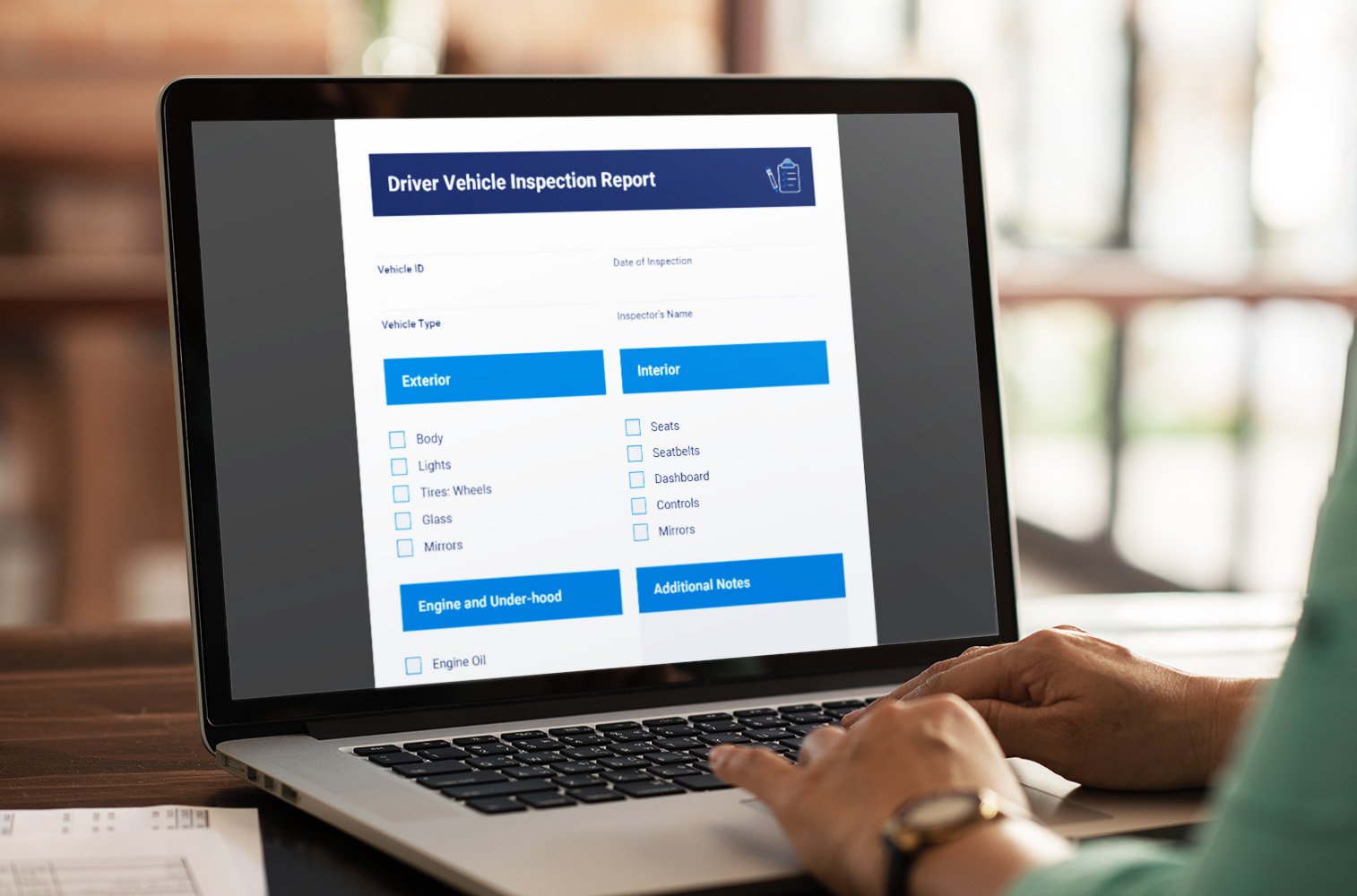

Driver assessment checklist
A driver assessment checklist is used to assess the driving habits of your employees to ensure they follow the proper safety procedures. This should be done periodically to identify areas for improvement and promote safe driving practices.
You can hire external assessors or create an internal task force to conduct these audits.
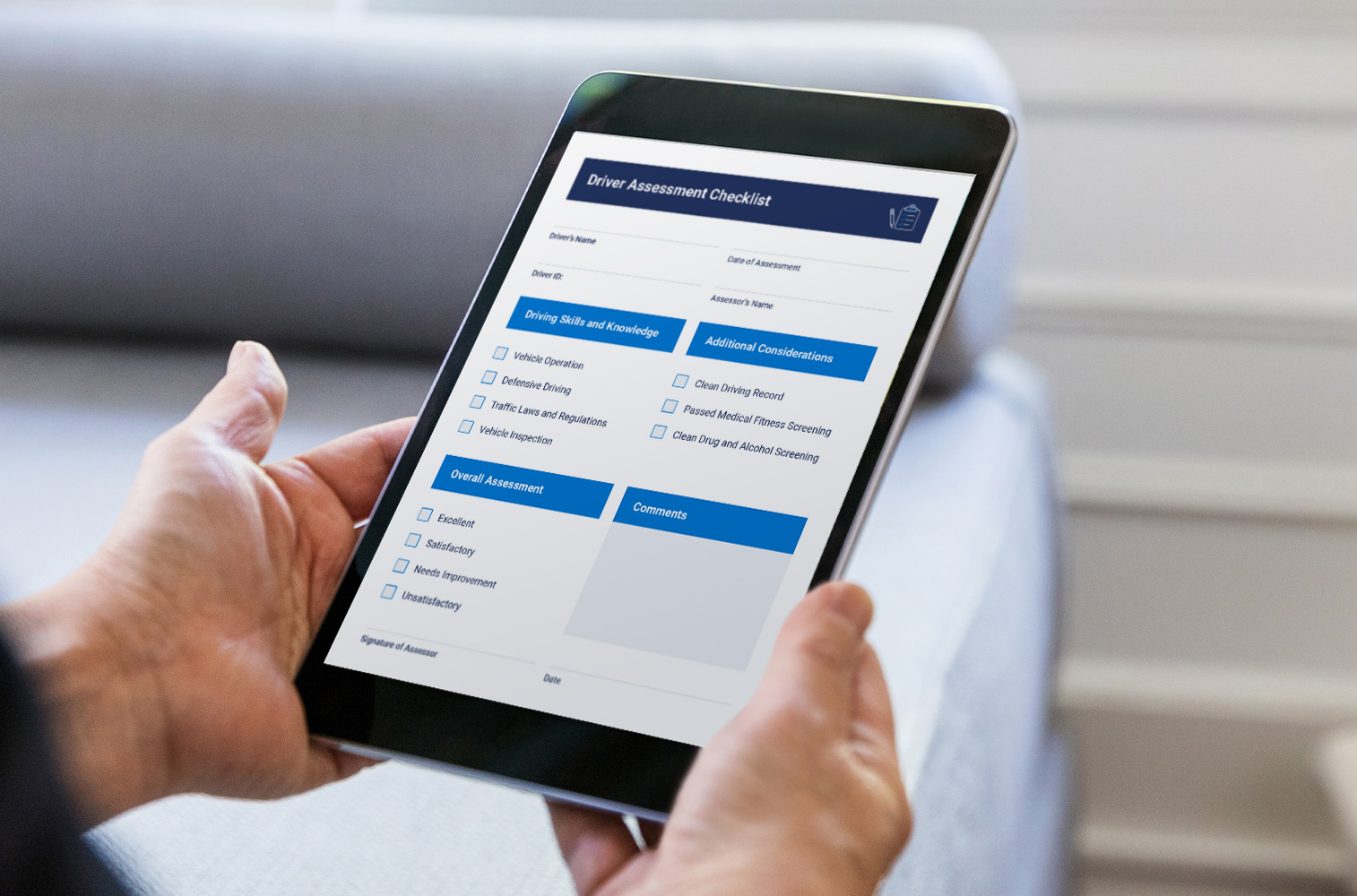

Take action on your fleet safety today
To see how your current fleet safety program measures up, try Geotab’s Safety Grader. Use this tool to evaluate fleet driver safety and identify areas for improvement based on industry benchmarks. Check out Geotab’s fleet safety solution to efficiently improve your safety program.
Subscribe to get industry tips and insights
Frequently Asked Questions
Fleet safety is a practice by companies to ensure the safety of their vehicles and drivers. Organizations accomplish this by implementing programs to train drivers and create safety standards and policies.
Fleet safety councils ensure safety policy is communicated properly and enforced to protect drivers and the company's reputation. A lack of policy can impact companies financially, create legal liability and influence their brand reputation.
The main elements of a fleet safety program are:
- Clear policies and procedures
- Ongoing driver training and education
- Frequent vehicle maintenance
- An effective system for incident reporting and prevention
Fleet safety programs increase driver safety, improve fleet efficiency and reduce legal risks.
A fleet safety manager oversees a fleet safety program. They create safety policies, manage driver safety education and manage ongoing risk assessment and mitigation.
A fleet driver is an employee who operates vehicles on behalf of the company. They usually require special training and licenses or certifications.
The Geotab Team write about company news.
Table of Contents
- What is a fleet safety program?
- How to build an effective fleet safety program
- 1. Establish clear driver rules and regulations
- 2. Set up a fleet safety council
- 3. Identify and screen all drivers
- 4. Train drivers on best safety practices
- 5. Create fleet safety benchmarks
- 6. Set incident response procedures
- 7. Monitor policy compliance with fleet rules
- 8. Hold your team accountable
- 9. Stay up-to-date on fleet maintenance
- Why is a fleet safety program important?
- Fleet driver safety tips
- Fleet driver safety program templates
- Take action on your fleet safety today
Subscribe to get industry tips and insights
Related posts

What is government fleet management software and how is it used?
April 10, 2025
3 minute read

How a well-built fleet safety culture prevents legal trouble
March 28, 2025
5 minute read

Driver behavior monitoring systems: Fleet managers’ guide for top tools + implementation tips
March 27, 2025
7 minute read

DOT tire regulations: Fleet safety best practices + checklist
March 27, 2025
5 minute read

How AI-based in-cab video can lower fleet insurance costs and improve safety
March 24, 2025
3 minute read
